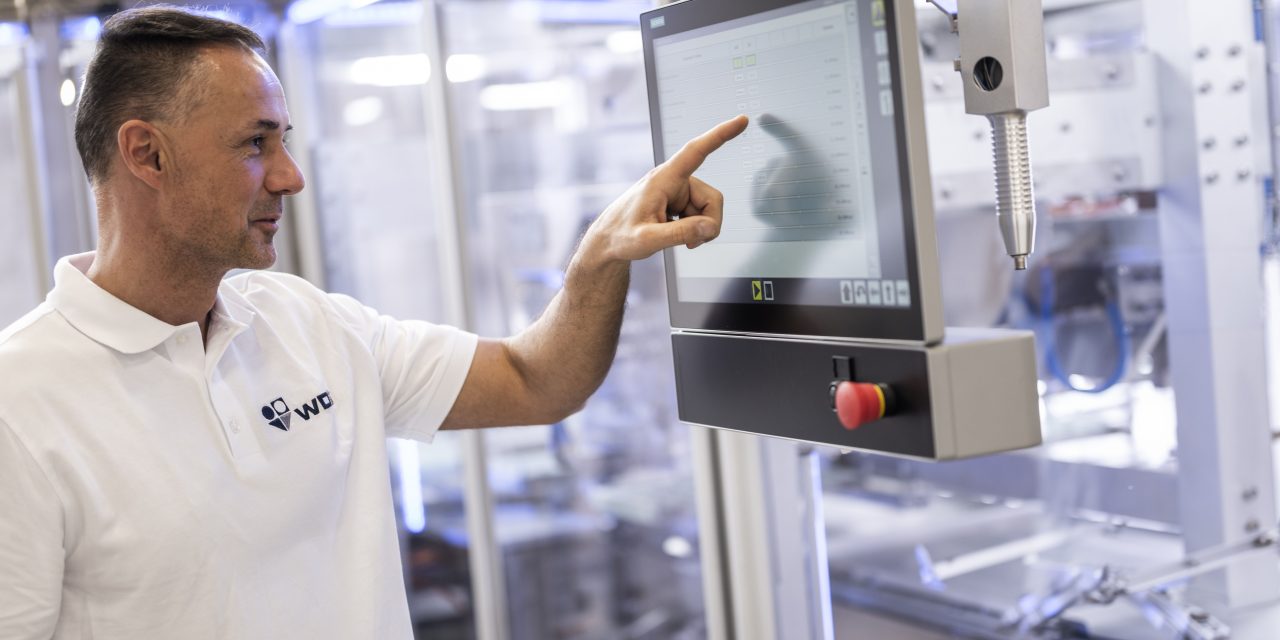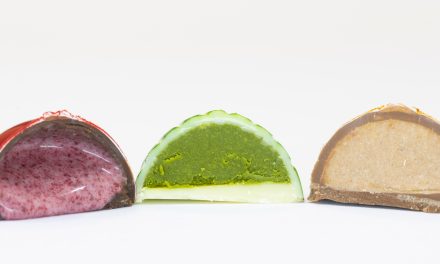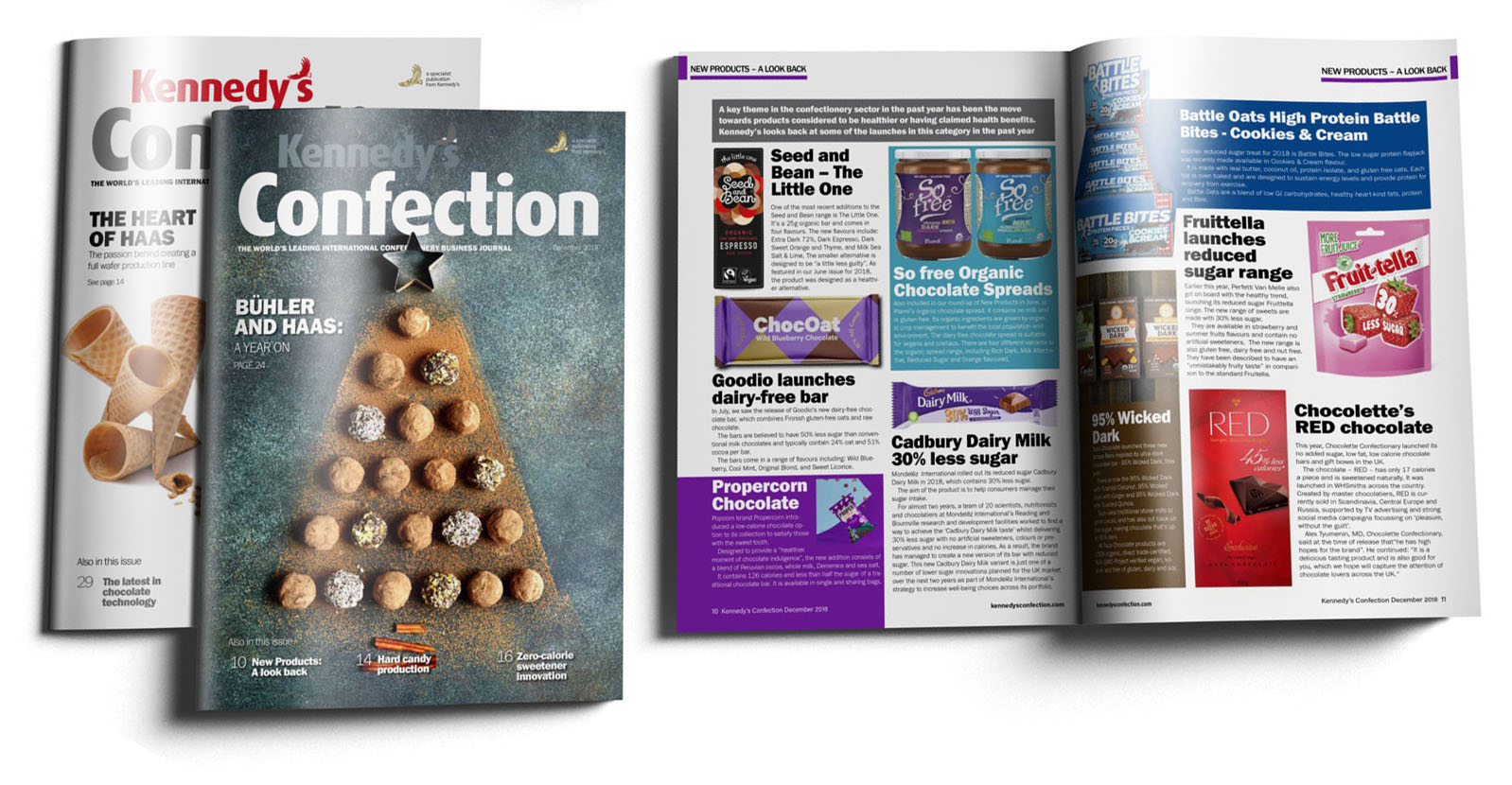Suzanne Callander reports on the need for flexible cooking and depositing solutions for companies looking to benefit from potential new jelly and gummy revenue streams.
Gummies and jellies are one of the most flexible confectionery products. Once the ingredients have been dissolved and condensed in the cooking process, they have the ability to be moulded into a limitless number of shapes, sizes and formats using a variety of moulding and depositing techniques.
The ongoing consumer trend for more healthy treats has created new opportunities in the jellies and gummies sector. Confectioners can now add value to their traditional offerings with the addition of vitamins or nutraceutical ingredients. According to a report from Innova Market Insights during the first 8 months of 2021, one-quarter of vitamin and mineral launches were in the form of gummies – aimed at millennials and generation Z consumers.
Jellies and gummies with a healthy label can offer a valuable new revenue stream – created using real fruit pulp or juices, or with plant-based ingredients, with lower-sugar content, or with added vitamins or nutraceutical ingredients. So, it is important that cooking and depositing equipment today is flexible enough to cope with the different cooking requirements of these ingredients.
Offering advice on some of the most important considerations when specifying cooking and depositing equipment for producing jellies and gummies – in addition to hard candy and fondants – John Loynds, Managing Director at Loynds International provided the following list:
• Production capacity: It is important to choose equipment that can meet the desired production capacity and scale of operation.
• Quality and food safety: The equipment should be made of high-quality, food-grade materials and should meet all relevant food safety standards.
• Ease of use and maintenance: The equipment should be easy for operators to use and maintain, so clear instructions and simple controls are a benefit.
• Customisation and flexibility: The equipment should be able to produce a wide range of products and should be adaptable to allow confectioners to keep up with changing consumer preferences.
• Energy efficiency and sustainability: With energy costs continuing to rise, it is important to look out for energy-efficient features. Processes today also need to have a minimal impact on the environment.
• Cost: The equipment supplier should be able to demonstrate that their equipment can offer a fast return on investment (ROI).
• Reliability and durability: The equipment should be reliable and durable, with a long lifespan.
John went on to discuss the heating medium that is mostly employed for cooking sugar-based confectionery products. “Steam is still a commonly used heating medium for cooking confectionery, and there are some very good reasons why it remains so popular. Firstly, it offers an efficient heat transfer medium – steam is able to transfer heat quickly and evenly to the confectionery mixture in the cooking vessel and no direct heat is applied to the product, reducing the potential for product burning onto the cooking vessel.
“Steam also provides a gentle heat which can help preserve the quality and texture of the confectionery being cooked,” says John.
Steam also allows for very precise temperature control, which is often an important requirement when products need to be cooked to the same consistency, batch after batch. Finally, steam is also considered to be a safe heating medium as it does not generate open flames and does not produce any harmful by-products.
A challenge facing everybody today, of course, is the rapidly rising cost of energy, which means that confectionery producers need to look out for more energy efficient technologies. On this subject John says: “There are several ways that confectioners can ensure that their cooking process is as energy efficient as possible. The first step is to make use of insulation. Insulating cooking equipment can help to reduce heat loss and improve energy efficiency of the process. Confectioners should also look at how they can optimise the cooking process to minimise energy consumption – for example by reducing cooking times or temperatures.”
Flexibility is key
Confectionery manufacturers today require versatility to create lots of different jellies and gummies in a single plant, explained Edward Smagarinsky, Group Product Manager – Mogul at TNA, in a whitepaper document entitled ‘Keeping up with confectionery demand’. He believes that starch moulding technology offers the flexibility to create jellies and gummies in a variety of formats, sizes and shapes. The depositing process, for example, delivers opportunities to accommodate various product types and colours. Depositing pumps are available in a range of piston diameters and configurations, suitable for handling different recipe types – from lightly aerated to heavy syrup bases products. Meanwhile, pump variations can be designed to deposit single colour or side-by-side colour articles, as well as centre-fill, layered and striped confections.
Arguing in favour of the starch moulding process, Edward says that it allows for the production of many different shapes and sizes at a relatively low-cost – all that is required is required is a change of the mould board used to compress the confectionery design in the tray.
According to Edward the presence of starch allows confectioners to achieve a longer or shorter bite, depending on how long the product is left to cure. The process also results in the gummy hardening on the outside, which protects it from damage and helps maintain product shape and quality.
No starch required!
When it comes to depositing solutions for jellies and gummies production, Baker Perkins argues that starchless moulding is actually the most cost-effective method, saying that the elimination of starch from the process can reduce production costs and improve hygiene while also offering the capability to produce a wider range of products giving confectioners the ability to innovate and add value to their product offerings.
Baker Perkins introduced to starchless moulding concept many years ago, to in a bid to reduce production times – from an accepted 24-hour process using starch moguls – to just minutes. The process also takes up much less space than traditional mogul machines and uses less energy. It can also help create cleaner and healthier working environments as there will be no starch dust in the atmosphere.
Today the company offers starchless depositors that enable hard candy, jellies and fruit snacks containing supplements for the healthcare, functional and medicated markets, to be manufactured in a hygienic, starch-free environment.
Baker Perkins has also collaborated with gelatin specialist, Rousselot to develop a range of gummy caps that employ a fast-setting gelatin which offers a new delivery format that combines a chewy casing with a liquid centre-filling – said to be ideal for nutraceutical and pharmaceutical products. This solution is said to maximise the utilisation of costly active ingredients – to avoid heat degradation the filling is prepared and deposited at ambient temperature. Traditionally, an excess quantity of active ingredient is used when it is added to hot syrup to offset heat degradation. However, this can be avoided by carrying the active ingredient in a liquid or gel. As an example, an 80mg Vitamin C gummy cap requires 30% less Vitamin C in the formulation than a traditional functional gummy.
Whichever side of the starch or starchless moulding debate you are on, there can be no denying that, thanks to the growth in demand for healthy gummies, the sector now offers huge opportunities. To address this growing demand, however, there is a need to carefully consider the technology you employ – Versatility and flexibility are key!
Getting smarter and more modular
Kennedy’s Confection spoke to Holger Brack, Head of Product Technology Lab and Applications at Winkler und Dünnebier Süßwarenmaschinen, about advances in cooking and depositing solutions.
Q: What developments have been made in cooking and depositing systems in recent years?
The most important developments in the field of cooking relate to the creation of gentler and more effective constriction of the cooking masses.
Modularity of equipment is another requirement today. It is important that systems can be cost-effectively expanded to meet potential future demand.
The latest developments in the area of depositing that we are seeing is a move towards inline depositing systems. Further, and particularly in the fruit gummies and jellies sector, we are seeing a demand for depositing systems that are capable of depositing masses that contain more valuable and natural ingredients – such has vitamins and real fruit extracts – which need to be handled gently and on a strict first in-first out principle.
Confectionery producers today are also keen to move towards smarter factories and this includes the cooking and depositing systems which need to be able to communicate directly with each other.
Q: How can cooking and depositing systems be scaled up and down depending on changing needs?
With modular design of systems comes the ability for cooking processes to be multiplied or enlarged without having to change the basic system setup. This means that temperature sensors and stirring elements need to be flexibly positioned, in order to allow the equipment to still be able to cook effectively if batch volumes change.
Q: How can efficiency and accuracy be guaranteed with flexible and rapid changeover?
A product change should be able to be carried out in a modern process without the need to shut down the cooking and depositing line. This can be ensured with fully-automatic mould changing systems which enable seamless mould changes.
To achieve very fast changeover times, look for a depositor with changeover pump systems that can be replaced quickly – ideally in just a few minutes. For fast and easy cleaning, the depositors should be moveable so that the cleaning process can be carried out separately outside the mould/tray transport while the line continues production, maybe using a second depositor.
Q: How do systems allow for the creation of a large range of products such as hard candies, lollipops, jellies, gummies fondants and fudge?
To have the ability to create the greatest possible variety of products the moulds, nozzle bars and, if necessary, depositing systems must be exchangeable. In addition to these format parts, changes must also be made in the area of moulding and, if necessary, in mould wetting. This usually drives up the plant costs, which is why, even though the creation of a flexible plant is possible, it is very rarely implemented.
Editorial contact:
Editor: Kiran Grewal kgrewal@kennedys.co.uk







